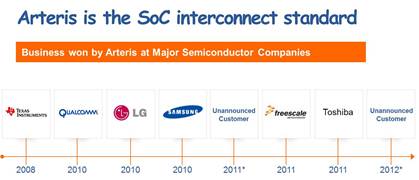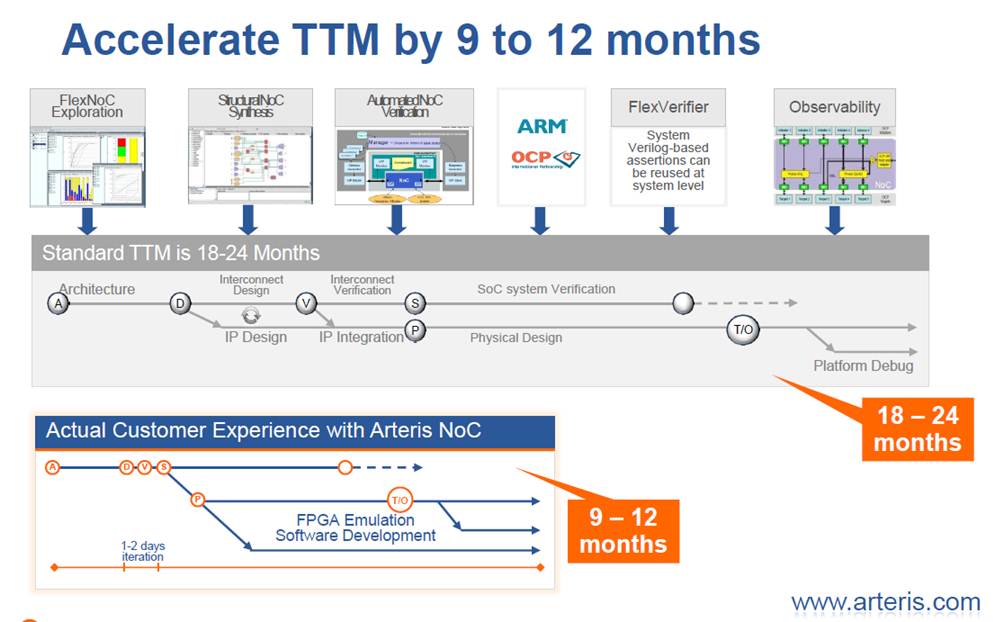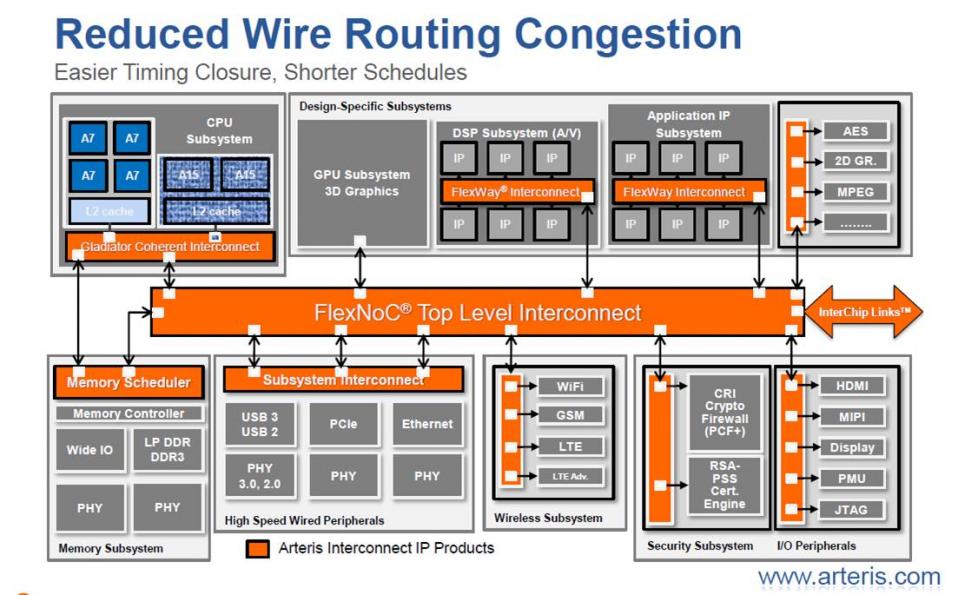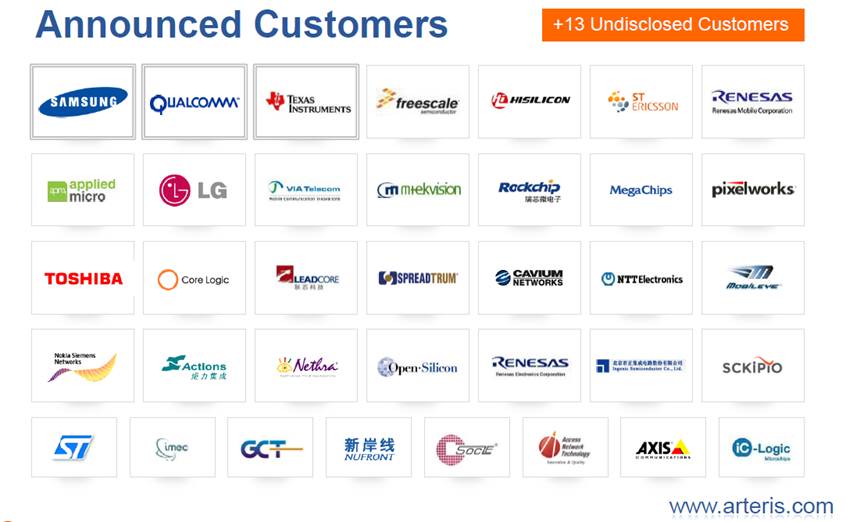I have mentioned NoC adoption explosion during the last two years, illustrated by the huge revenue growth of Arteris. This trend is now confirmed in the fastest moving segments, the Application Processors (AP) and LTE Modem for mobile applications. In fact, Arteris FlexNoC has been integrated in the majority of AP and LTE Modem chips being shipped in 2012 and shipping in 2013. What is the common and key feature for these chips?

Each of these is shipping by dozen of millions, all of them are extremely complex, counting 100 IP or more, and the Time To Market (TTM) is dramatically important: if a chip maker miss the release to production by only one months, several dozen if not hundred $ millions of chip sales just vanishes… and will never be catch-up, because OEM integrating these IC like Apple, Samsung or HTC have to release a new product generation almost every 6 months. If you take a look at the business won by Arteris since 2008, you will name most of the major semiconductor companies (even if you are not supposed to know the name of “Unannounced Customer”, just think about “Major”…).

If you come back to one of my very first post about Network on Chip, you remember that one of the most important NoC advantage is to avoid routing congestion on large SoC, thus accelerating TTM as the back-end cycles (Place and Route/post routing simulation/modification) are extremely time consuming. But we know that for IC like AP and LTE Modem, the key sales message will be about Performance, measured in term of main CPU Frequency, and Low Power, as these will be the most visible feature for the end user: can I use my smartphone right after opening it? Do I need to plug it every two hours or could I use it for days before charging? Arteris’ FlexNoC is also addressing these two very important requirements that every chip maker has… or that the company should have, in order to be successful!

It’s very interesting to see that the very fast growing chip makers or ASIC companies are also adopting the NoC, and the reasons why they adopt Arteris’ FlexNoC: high frequency, low gate count, lower power, higher flexibility or Quality of Service (QoS) are the most frequently mentioned advantages.
Fuzhou Rockchip Electronics Co. Ltd.
“Arteris FlexNoC interconnect IP enables us to exceed our design frequency and power requirements while giving us more flexibility than possible using older interconnect technologies, like buses and crossbars,” said Li Shiqin, IC Design Manager at Rockchip.
MegaChips Corporation
“From our experience with Arteris’ NoC technology over the years, we knew that Arteris FlexNoC IP was the fastest interconnect fabric for SoCs with multiple initiator and target IP blocks. However, we were surprised that FlexNoC could continue to run at fast design frequencies with a significantly lower gate count and less power consumption than alternative bus fabrics,” said Gen Sasaki, General Manager of Division No.2, MegaChips Corporation.
Open-Silicon, Inc.
“Arteris’ network-on-chip interconnect IP made timing closure much easier and allowed us to implement the QoS management required for the design’s high-performance I/O and sophisticated hardware acceleration engines. In addition, we were able to close timing in a fraction of the schedule needed previously for designs using older crossbar-based architectures,” said Colin Baldwin, senior director of marketing, Open-Silicon

When you see such a customer list, you understand why the company is claiming that FlexNoC is integrated into about 60% of the Application Processor and LTE Modem IC. When you know the associated shipments in smartphones and media tablet applications, you can guess that Arteris royalty revenues will sky rocket in 2013 and after!
To learn a lot more about NoC and Arteris products, just go here.
By Eric Esteve from IPNEST
Share this post via:







Comments
0 Replies to “Network-on-Chip is the backbone of Application Processor and LTE Modem”
You must register or log in to view/post comments.